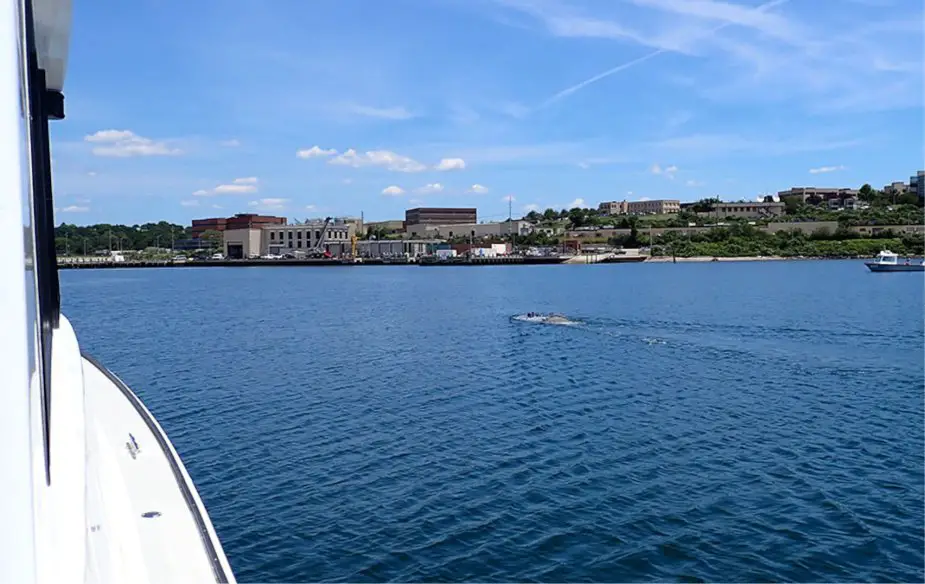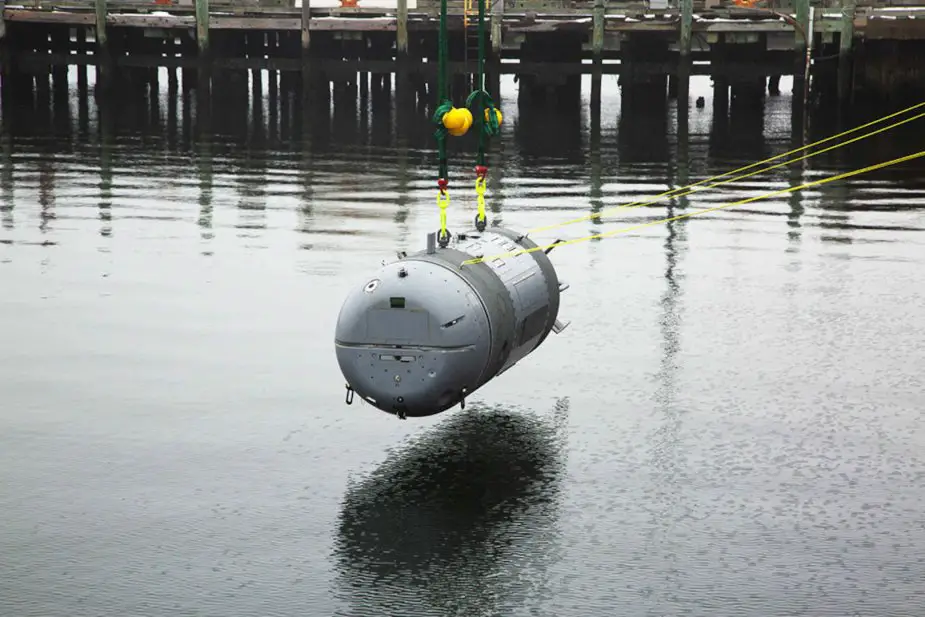Breaking news
US Navy successfully tests the Snakehead large displacement UUV.
According to information published by the U.S. DoD on August 10, 2022, a U.S. Navy team led by NUWC Division Newport staff demonstrated an end-to-end intelligence preparation of the operational environment (IPOE) mission with the Snakehead large displacement unmanned undersea vehicle (LDUUV) prototype at the Narragansett Bay Test Facility.
Follow Navy Recognition on Google News at this link
 Snakehead Large Displacement Unmanned Underwater Vehicle (Picture source: US DoD)
Snakehead Large Displacement Unmanned Underwater Vehicle (Picture source: US DoD)
The Snakehead LDUUV conducted a long-distance ingress, performed a sonar survey box, and then egressed back to the test facility, demonstrating a new milestone in total sortie endurance.
The sortie, conducted with the Draper Laboratory-developed Maritime Open Architecture Autonomy, successfully collected sonar data utilizing technology from the Pennsylvania State University Applied Research Laboratory.
Snakehead, a modular, reconfigurable, multi-mission LDUUV deployable from submarines and surface ships, provides guidance and control, navigation, situational awareness, propulsion, maneuvering, and sensors in support of the IPOE mission.
Snakehead is innovative in the areas of hull materials, lithium-ion battery certification, advanced sensors, and launch and recovery from both submarines and surface vessels.
The accomplishment of this mission in the system’s intended operational environment was a big step for the program to gain confidence in the vehicle software and hardware systems, as the team pushes toward extended endurance operations and layering additional system capability, said Chris DelMastro, head of the Undersea Warfare Platforms and Payload Integration Department.
The IPOE mission is a critical step toward understanding an area of interest and feeds into planning a relevant course of action to support the warfighter.
To date, Snakehead has conducted 155 in-water sorties and more than 78 hours of runtime utilizing a government-owned and controlled modular open system architecture to include vehicle controller software; autonomy software; and command, control, and communications software — TopsideC3 — for mission planning, operations, and analysis.
Since last year, the team conducted up to 190 hours of simulations using full-up vehicle hardware-in-the-loop and software-in-the-loop simulation tools. These simulated missions ensure the software operates as intended and that mission parameters are set correctly and confirmed by the vehicle.
Unmanned underwater vehicles (UUV), sometimes known as underwater drones, are submersible vehicles that can operate underwater without a human occupant.
These vehicles may be divided into two categories: remotely operated underwater vehicles (ROUVs) and autonomous underwater vehicles (AUVs). ROUVs are remotely controlled by a human operator. AUVs are automated and operate independently of direct human input.
 Snakehead Large Displacement Unmanned Underwater Vehicle (Picture source: US DoD)
Snakehead Large Displacement Unmanned Underwater Vehicle (Picture source: US DoD)





























